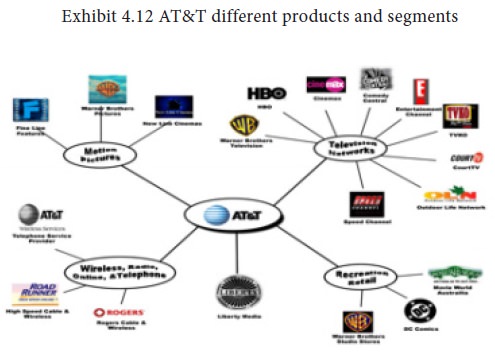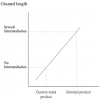MARKETING MANAGEMENT - Structure and Design of Marketing Channels
Channel Dynamics - Structure and Design of Marketing Channels
Posted On :
Like any other concept, channel systems do change according to the development and the need of the hour.
Channel Dynamics
Like any other concept, channel systems do change according to the development and the need of the hour. With consumers becoming conscious of where they buy and how they want things to be delivered there has emerged different systems namely the vertical, horizontal and multichannel marketing systems.
The conventional or the traditional marketing channel encompasses a producer, one or few wholesalers and one or few retailers. The objective of theses different players is to see that they make enough profits, they are highly independent and don’t have control over other channel members.
In contrast, the Vertical Marketing System (VMS) has the three members acting as one unified team, there is one channel member who owns the other members or allows franchising but ensures a greater role in
There are three variants of vertical marketing system namely corporate, administered and contractual vertical marketing system. In case of corporate the organization combines the production and the distribution under one roof. Organisations like Asian paints, Amul are not only involved in the production of the products but they also own a considerable no of outlets. An administered vertical marketing system coordinates the production and distribution efficiencies but use their size as a dominant influence.
HLL commands a greater shelf space or Samsung gets better displays in retail outlets purely because of their size and the reputation they carry with them. The third variant namely contractual vertical marketing system coordinates the activities of individual firms at different levels integrating their programs at contractual levels. Firms like McDonalds, KFC use this type of vertical marketing systems for the integration of their businesses.
The Horizontal marketing systems is one where two or more unrelated businesses come together pull in resources to exploit the emerging opportunities. Many private players especially banks have got into the act of tie-ups with retail stores or even with fuel outlets in order to gain greater market. ICICI bank has got tied with Big Bazaar, and this has greatly enhanced the reputation of both these firms as well as increasing the customer base respectively.
The Multi-channel marketing systems as the term simplifies it is one in which a firm uses multiple channels to reach different customer segments. In the present scenario most organizations have started to use multiple channel method because it helps in the expansion of the market coverage, it costs little when the target segment is small instead of using a bigger channel and mainly helps in customizing the offering according the need of the segments. Exhibit 4.12 gives an idea about the different products and AT & T uses different channels to reach out to different segments.

When distribution when goes overseas they are bound to face a lot of restraints and problems like the host country laws, the laws of the country to which the goods are shipped, the laws of the nations through which the goods pass must be abided by the company. Apart from this, other environmental factors do play an active role when considered from a macro-marketing perspective. In the next lesson, we deal with the role of retailers, wholesalers and logistics in this value chain and how do they facilitate the process of performing the channel function effectively.
Like any other concept, channel systems do change according to the development and the need of the hour. With consumers becoming conscious of where they buy and how they want things to be delivered there has emerged different systems namely the vertical, horizontal and multichannel marketing systems.
The conventional or the traditional marketing channel encompasses a producer, one or few wholesalers and one or few retailers. The objective of theses different players is to see that they make enough profits, they are highly independent and don’t have control over other channel members.
In contrast, the Vertical Marketing System (VMS) has the three members acting as one unified team, there is one channel member who owns the other members or allows franchising but ensures a greater role in
There are three variants of vertical marketing system namely corporate, administered and contractual vertical marketing system. In case of corporate the organization combines the production and the distribution under one roof. Organisations like Asian paints, Amul are not only involved in the production of the products but they also own a considerable no of outlets. An administered vertical marketing system coordinates the production and distribution efficiencies but use their size as a dominant influence.
HLL commands a greater shelf space or Samsung gets better displays in retail outlets purely because of their size and the reputation they carry with them. The third variant namely contractual vertical marketing system coordinates the activities of individual firms at different levels integrating their programs at contractual levels. Firms like McDonalds, KFC use this type of vertical marketing systems for the integration of their businesses.
The Horizontal marketing systems is one where two or more unrelated businesses come together pull in resources to exploit the emerging opportunities. Many private players especially banks have got into the act of tie-ups with retail stores or even with fuel outlets in order to gain greater market. ICICI bank has got tied with Big Bazaar, and this has greatly enhanced the reputation of both these firms as well as increasing the customer base respectively.
The Multi-channel marketing systems as the term simplifies it is one in which a firm uses multiple channels to reach different customer segments. In the present scenario most organizations have started to use multiple channel method because it helps in the expansion of the market coverage, it costs little when the target segment is small instead of using a bigger channel and mainly helps in customizing the offering according the need of the segments. Exhibit 4.12 gives an idea about the different products and AT & T uses different channels to reach out to different segments.

When distribution when goes overseas they are bound to face a lot of restraints and problems like the host country laws, the laws of the country to which the goods are shipped, the laws of the nations through which the goods pass must be abided by the company. Apart from this, other environmental factors do play an active role when considered from a macro-marketing perspective. In the next lesson, we deal with the role of retailers, wholesalers and logistics in this value chain and how do they facilitate the process of performing the channel function effectively.
Tags : MARKETING MANAGEMENT - Structure and Design of Marketing Channels
Last 30 days 3477 views














